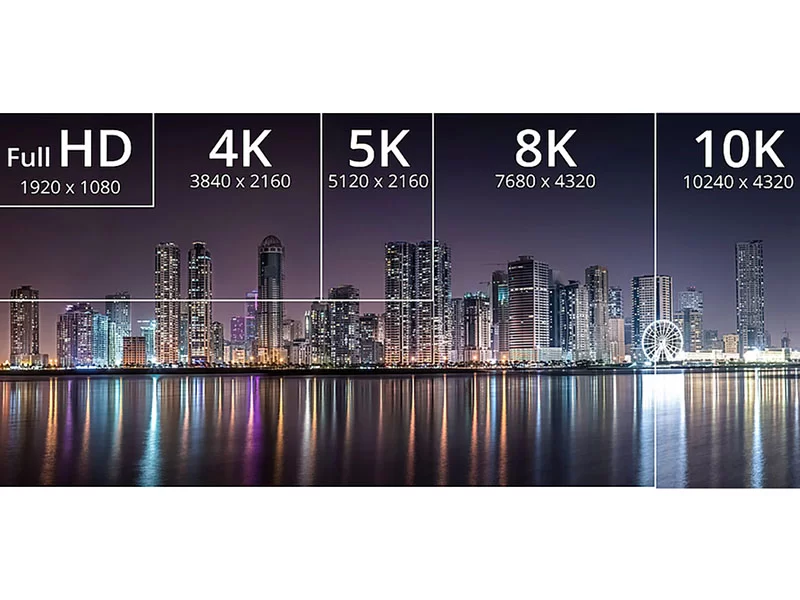
HD, Full HD, 2K, 4K, 8K and 10K are different screen resolutions, whether for TVs, monitors, among others.
They differ by the number of pixels that are displayed on the screen, that is, how many points will form the image. The more pixels, the better the display quality.
- HD: 1280 x 720 pixels;
- Full HD: 1920 x 1080 pixels;
- 2K: 2048 x 1080 pixels;
- 4K or Ultra HD: 3840 x 2160 pixels;
- 8K: 7680 x 4320 pixels;
- 10K: 10240 x 4320 pixels.
Size x Resolution
When we talk about screens, we need to take into account two measures: size and resolution.
While size refers to the physical dimensions of the screen, resolution is the amount of information displayed within these size limits.
The screen size is measured by inches, each one being 2.54 centimeters. That is, a smartphone with a 5-inch screen is 12.7 centimeters (5 x 2.54). As the screens are usually rectangular, the measurement is made considering the size of the diagonal.
The resolution shows us how many pixels fit on the screen. The pixels are the points that make up the image, and are organized in rows and columns. In this way, the resolution will define how many pixels there are in each row (width) and each column (height).
So, saying that a screen has a resolution of 1280 x 720 means that it displays 1280 pixels per line and 720 per column.
HD (High Definition)
The screens of HD resolution, or High Definition, are those of 1280 x 720 pixels, that is, almost 1 million pixels. They are mainly used on widescreen (16: 9) screens.
Full HD
They have a better image quality than HD, with a 1920 x 1080 aspect ratio, which is equivalent to more than 2 million pixels. They are also suitable for 16: 9 format screens.
2K
The 2K resolution, with proportions 2048 x 1080 pixels, is an intermediate version between Full HD and Ultra HD and ends up not being found in the market.
2K is mainly adopted by the DCI (Digital Cinema Initiatives) film industry. It is generally used for 19:10 aspect ratio screens.
4K or Ultra HD
Although the 3840 x 2160 ratio is the main aspect of this model, the 4K resolution has some variations. One of them is the one adopted by Digital Cinema Initiatives, with a 4096 x 2160 ratio.
Another variation found is the Ultra Wide HDTV, 5120 x 2160 pixels.
8K
With four times more pixels than 4K, these screens have a resolution of 7680 x 4320 pixels. It is also known as Full Ultra HD (FUHD) or 8K UHD. This resolution can be found in different screen proportions, such as:
- 16: 9
- 17: 9
- 21: 9
There is also a variation called 8K Fulldome, with a resolution of 8192 x 8192 pixels. This model is generally used in projection equipment.
10K
Currently, 10K is one of the largest resolutions found on the market. It is 10328 × 7760 pixels and is generally found on UltraWide aspect ratio screens, that is, 21: 9.